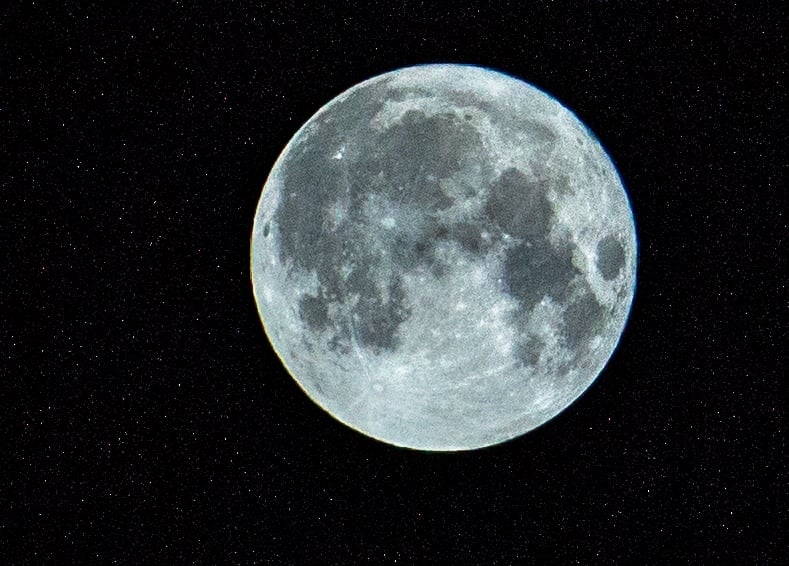
This forthcoming Wednesday night will offer a unique chance to witness a rare event—the biggest August Super Blue Moon.
This exceptional occurrence presents a unique opportunity to observe a phenomenon known as a “blue supermoon,” an extraordinary event that was last observed in 2009. The phenomenon, depending on weather conditions, will be visible from all parts of the globe.
The blue moon materializes due to the peculiar arrangement of days in the calendar year, resulting in thirteen full moons instead of the usual twelve.
This blue supermoon, also recognized as just a supermoon, will manifest as larger and brighter than its typical appearance. This optical enhancement can be attributed to the moon’s proximity to its nearest point in orbit around Earth.
However, despite the name of this lunar phenomenon, the moon will not acquire a blue color. The terminology used to describe this moon does not refer to its color but rather denotes its deviation from the generally accepted nomenclature of lunar names. Diverse societies worldwide, including Native American cultures, attribute distinct titles to full moons.
Although a full moon commonly graces the night sky once each month, signifying an annual total of twelve occurrences, the lunar phases necessitate 29.5 days to complete a cycle, which equates to 354 days over twelve cycles.
This length does not correspond to 365/366 days in a standard calendar year, resulting in an additional thirteenth full moon approximately every two and a half years. It is suggested that the origin of the phrase “once in a blue moon,” meaning something that seldom happens, is due to the rarity of this event.
The preceding blue moon took place in August 2021, and the subsequent one is anticipated in 2026.
Yet, the fusion of a blue moon and a supermoon constitutes a far more infrequent phenomenon, making this night a very rare chance to admire it.
As indicated by Gianluca Masi, an Italian astronomer and the initiator of the Virtual Telescope Project, the next occurrence of a blue supermoon is not anticipated until the year 2037.
Last August Blue Moon in Greece
In 2021, the August full moon, often called a “blue moon,” illuminated Greece’s ancient sites like the Acropolis and the Temple of Poseidon. Observers readied their cameras to immortalize this rare spectacle. Remarkably, over 120 archaeological sites and museums offered free admission, inviting the public to partake in the splendor of the August full moon.
As the celestial event unfolded, the phrase “blue moon” took on a dual significance. Traditionally denoting the second full moon within a calendar month, the August “Sturgeon Moon” embraced an alternate interpretation. It is the third full moon within a season characterized by four full moons—a phenomenon that intrigued observers for centuries.
See all the latest news from Greece and the world at Greekreporter.com. Contact our newsroom to report an update or send your story, photos and videos. Follow GR on Google News and subscribe here to our daily email!



